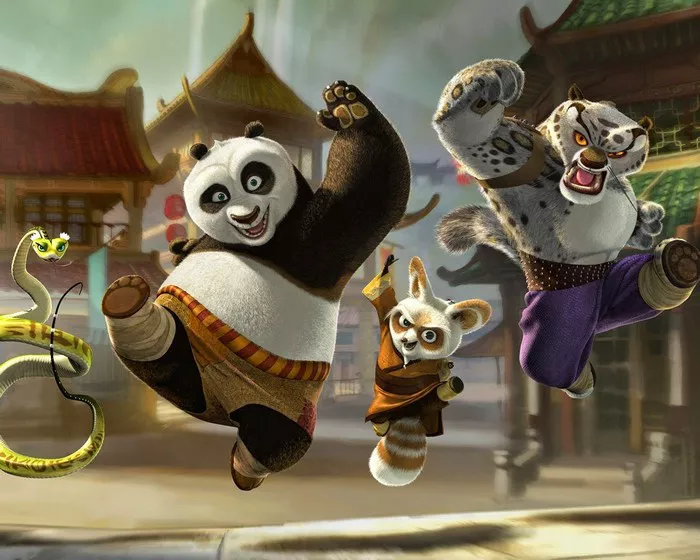In the animated film “Kung Fu Panda,” the character Tai Lung emerges as a formidable antagonist, driven by a thirst for power and recognition. As the adoptive son of Master Shifu and once-promising student of kung fu, Tai Lung’s descent into darkness raises questions about the nature of his character. Is Tai Lung inherently evil, or is he a victim of circumstance, driven to villainy by a combination of ambition, rejection, and betrayal? In this article, we delve into the complexities of Tai Lung’s character, exploring his motivations, actions, and the factors that shape his journey throughout the film.
The Origins of Tai Lung
1. The Prodigy of Master Shifu
Tai Lung is introduced as the adoptive son of Master Shifu, the revered kung fu master of the Jade Palace. From a young age, Tai Lung displays extraordinary talent and potential as a martial artist, earning the admiration and high expectations of his adoptive father. Under Shifu’s tutelage, Tai Lung trains tirelessly, honing his skills and mastering the art of kung fu with unparalleled proficiency. However, despite his prowess as a warrior, Tai Lung’s thirst for validation and recognition drives a wedge between him and his mentor, setting the stage for his eventual downfall.
2. Rejected Aspirations
Despite his skill and dedication, Tai Lung’s aspirations of becoming the Dragon Warrior—the legendary kung fu warrior prophesied to bring peace to the Valley of Peace—are dashed when Master Oogway, the wise and revered tortoise, chooses the humble panda Po as the chosen one instead. This rejection proves to be a devastating blow to Tai Lung’s ego and sense of self-worth, fueling his resentment and bitterness towards those he perceives as standing in the way of his destiny. Tai Lung’s sense of entitlement and wounded pride pave the way for his descent into darkness, as he vows to claim the Dragon Scroll by any means necessary.
The Nature of Tai Lung’s Evil
1. Driven by Ambition
At the heart of Tai Lung’s character is his insatiable ambition, a driving force that propels him towards ever greater acts of villainy and destruction. Tai Lung’s desire to prove himself worthy of the Dragon Scroll and fulfill his destiny as the Dragon Warrior consumes him, blinding him to the consequences of his actions and the suffering he inflicts upon others. His ambition is fueled by a deep-seated need for validation and recognition, stemming from his desire to prove himself to his adoptive father and the world at large.
2. Betrayal and Resentment
Tai Lung’s descent into evil is also fueled by feelings of betrayal and resentment towards those he perceives as having wronged him. His rejection by Master Oogway and the subsequent imprisonment at Chorh-Gom Prison serve as catalysts for his transformation from a disillusioned prodigy to a vengeful villain. Tai Lung’s sense of entitlement and wounded pride drive him to seek revenge against those he believes have denied him his rightful place as the Dragon Warrior, leading him to lash out against the very people who once cared for him.
3. The Corrupting Influence of Power
As Tai Lung’s quest for the Dragon Scroll intensifies, he becomes increasingly consumed by his lust for power, leading him to embrace darker and more destructive tendencies. The allure of the scroll, with its promise of unlimited power and mastery over kung fu, blinds Tai Lung to the consequences of his actions, driving him to commit acts of violence and betrayal in pursuit of his goals. In his single-minded pursuit of power, Tai Lung loses sight of his humanity, becoming a shadow of his former self—a ruthless and merciless antagonist driven by a thirst for dominance and control.
Interpreting Tai Lung’s Character
Broken or Pure Evil?
The question of whether Tai Lung is inherently broken or pure evil is a complex and nuanced one, with no easy answers. On one hand, Tai Lung’s actions and motivations suggest a character driven by a combination of ambition, rejection, and betrayal, leading him down a path of darkness and villainy. His sense of entitlement and wounded pride serve as catalysts for his descent into evil, fueling his desire for power and recognition at any cost.
On the other hand, Tai Lung’s character is also defined by his vulnerability and humanity, as evidenced by his tragic backstory and conflicted emotions. Despite his villainous deeds, Tai Lung is portrayed as a complex and multidimensional character, capable of moments of introspection and doubt. His eventual defeat at the hands of Po and the realization of the futility of his quest for power suggest a character who is ultimately flawed and fallible, rather than irredeemably evil.
Conclusion
In conclusion, Tai Lung’s character in “Kung Fu Panda” is a study in contrasts, blending elements of ambition, resentment, and vulnerability to create a complex and compelling antagonist. His descent into darkness is driven by a combination of rejection, betrayal, and a thirst for power, leading him to embrace darker and more destructive tendencies in his quest for validation and recognition. However, Tai Lung’s character is also defined by his vulnerability and humanity, as evidenced by his tragic backstory and moments of introspection. Ultimately, whether Tai Lung is broken or pure evil is a matter of interpretation, as his character embodies the complexities of the human condition and the blurred lines between good and evil.


